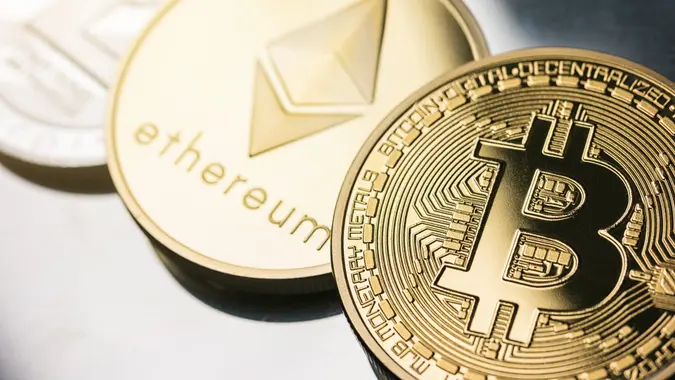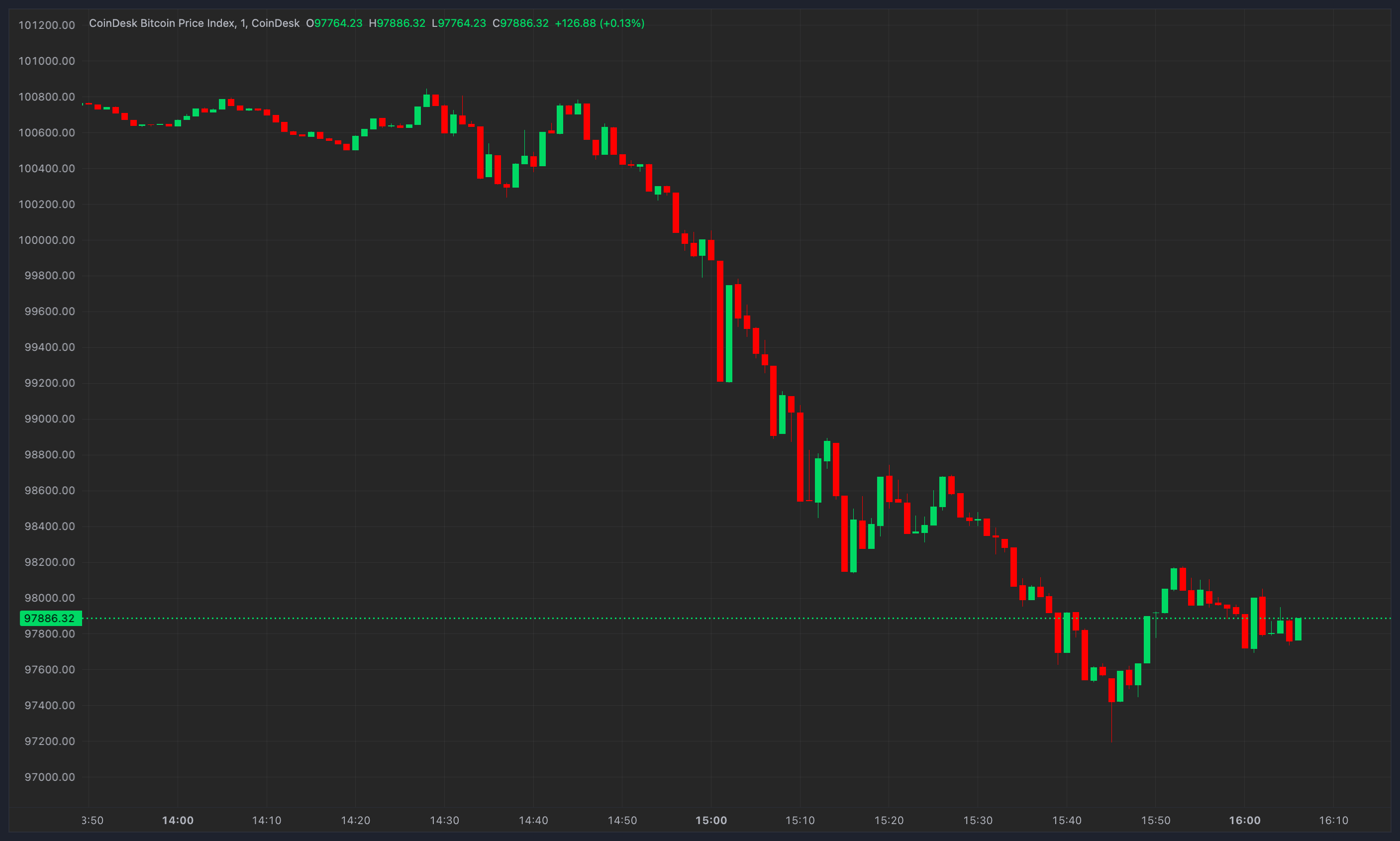
©Shutterstock.com
Ethereum — the platform that hosts most of the world’s GameFi, DeFi and NFT protocols — has completed its long-anticipated upgrade to Ethereum 2.0. The Merge, as it’s known, shifted the platform from unsustainable and energy-intensive proof-of-work, PoW, mining to the far more efficient proof-of-stake, or PoS, consensus mechanism.
Now that the Merge is complete, the Ethereum network is undergoing a three-pronged process designed to make Ether, the platform’s native token, more scarce and therefore more valuable. Based on a concept that was first built into the Bitcoin network’s software, it’s called Ethereum triple halving, and the long-term financial health of ETH depends on it.
Does Ethereum Have a Halving?
The Ethereum network employs a similar process to increase the value of its own tokens. But Ether abandoned the proof-of-work mining consensus with the Merge and the arrival of Ethereum 2.0, so it ensures the financial soundness of its cryptocurrency through a similar, but different process called Ethereum triple halving.
History of Halving
To understand Ethereum’s halving process, it’s important to know the history and origin of the halving mechanism, which was first written into bitcoin’s software algorithm at the dawn of the cryptocurrency era.
According to Cointelegraph, the amount of bitcoin awarded to miners for completing a block is cut in half every 210,000 blocks mined, which takes place roughly once every four years. Miners used to receive an award of 50 bitcoins per block mined, but the first halving in 2012 reduced the incentive to 25 — then to 12.5 Bitcoins in 2016 then to 6.25 in 2020.
The next halving will slash the award to 3.125 in 2024 and the process is scheduled to continue through 2140.
Bitcoin Growth
As the bitcoin network grows and new miners compete to finish blocks and earn coins, the software makes mining equations harder and harder to solve over time. Since total token production is limited to 21 million bitcoins, the halving process reduces the number of bitcoins that can be mined with each block.
Although it’s logical to think that ever-increasing difficulty and a 50% reduction in rewards would shoo miners away, the halving process makes each bitcoin rarer and therefore more valuable. The result is that the reduced incentive actually serves to attract more competing miners vying to claim fewer, more valuable coins.
What Is the Triple Halving of Ethereum?
The U.S. dollar is an inflationary currency that loses value over time as more dollars are printed. Bitcoin, on the other hand, is a finite currency whose production is capped at 21 million, which makes it a hedge against inflation with a value that should hold steady over time. But the periodic halving process makes it a deflationary currency whose value continues to increase.
Thanks to triple halving, ethereum, too, is a deflationary currency. As the name implies, the process consists of three different procedures.
1. Reduced Issuance
Before the Merge, miners earned rewards for completing blocks on the ethereum blockchain, just like bitcoin. But now, stakers — not miners — validate new blocks of ethereum, and the first part of the triple halving process will dramatically reduce the rewards they earn. According to a tweet from blockchain engineer Montana Wong, “annual issuance of ETH will drop from 4.3% pre-merge to an estimated 0.4% post-merge.”
This 10-times reduction in ETH issuance — which will increase deflationary pressure by curtailing supply — is made possible by the 99.99% reduction in energy usage that the Merge achieved.
Wong continued, “For example, if there is $20 mil worth of ETH being sold on the market every day to cover energy costs to secure the network, post-merge it will only be $2 mil.”
2. Burning
The second deflationary measure is a process known as burning. That’s when tokens are sent to a wallet that doesn’t have an access key, dooming them to be lost forever. In March, during the runup to the Merge, the Ethereum network burned nearly $6 billion worth of tokens. The burn mechanism split miner rewards — miners were still harvesting ETH in March — into base fees and tips. Miners kept the tips and the platform intentionally destroyed the base fees through burning.
3. Staked Withdrawals
The third and final deflationary mechanism is directly connected to the new post-merge validating mechanism — staking. According to CoolWallet, ETH owners can lock some of their currency in the network through validators, who are then responsible for securing the next block in the chain.
Stakers are rewarded for locking their ETH, but the network currently does not allow stakers to withdraw their holdings for six to 12 months after the Merge, which took place in September. Then, withdrawals will be allowed only in queue form to prevent a mass of locked-up holdings from flooding the market.
What Will Ethereum Be Worth in 2030?
This summer, when the Ethereum merge was drawing near, several pundits speculated that the lower transaction costs, increased energy efficiency and greater capacity that Ethereum 2.0 would bring could help the token reach $48,000 by 2030.
If ETH does climb to $48,000, it would be worth more than 36 times its current value of roughly $1,309. In June, when Motley Fool reported on this prediction, ETH was trading a little under $1,900, so a jump to $48,000 — $48,357.62, to be exact — would have represented a 26-fold price increase.
The publication pointed out that if history is a guide, such an increase wouldn’t be so far-fetched.
ETH climbed by 26 times its value between its 2015 debut and May 2017. It then saw another 26-times price increase between its 2017 high and its new peak in 2021, although ETH has since given back a good portion of those gains.
So, a 36-fold increase in eight years is certainly not impossible, but it’s important to temper expectations. For that to happen, ETH would have to hit a market cap of $5.8 trillion — more than Apple, Google and Microsoft combined.
How High Could ETH Go?
By the end of January, ETH had already lost 30% of its value in the run-up to the crypto winter. Even so, one very credible industry expert predicted that $5.8 trillion by 2030 was a gross understatement.
In an industry report, Cathy Wood, founder and CEO of ETF giant Ark Invest, predicted that ETH would hit a whopping $20 trillion market cap by 2030. At that target, each coin would be worth between $170,000 and $180,000.
Wood’s logic was that Ether was poised to displace traditional financial services and compete as global money because financial services companies will migrate to the blockchain and adopt DeFi apps built on the Ethereum platform.
Final Take
Only you and your financial advisor can decide if an investment in ETH is right for you. But the Merge cut ethereum’s energy consumption by nearly 100%, a reality that can attract countless new developers and make the network far less expensive to run.
On top of that, triple halving ensures that ETH will become more scarce and, therefore, more valuable over time. Publications like CoinDesk have predicted that the Merge and triple halving will launch a new era of opportunity for ETH investors, stakers and blockchain developers — and it’s happening now.
Our in-house research team and on-site financial experts work together to create content that’s accurate, impartial, and up to date. We fact-check every single statistic, quote and fact using trusted primary resources to make sure the information we provide is correct. You can learn more about GOBankingRates’ processes and standards in our editorial policy.
Read More: news.google.com









 Bitcoin
Bitcoin  Ethereum
Ethereum  Tether
Tether  XRP
XRP  Solana
Solana  Dogecoin
Dogecoin  USDC
USDC  Cardano
Cardano  Lido Staked Ether
Lido Staked Ether  TRON
TRON  Avalanche
Avalanche  Sui
Sui  Wrapped stETH
Wrapped stETH  Toncoin
Toncoin  Chainlink
Chainlink  Stellar
Stellar  Shiba Inu
Shiba Inu  Wrapped Bitcoin
Wrapped Bitcoin  Hedera
Hedera  Polkadot
Polkadot  WETH
WETH  Bitcoin Cash
Bitcoin Cash  LEO Token
LEO Token  Uniswap
Uniswap  Litecoin
Litecoin  Pepe
Pepe  Hyperliquid
Hyperliquid  Wrapped eETH
Wrapped eETH  NEAR Protocol
NEAR Protocol  Ethena USDe
Ethena USDe  USDS
USDS  Aptos
Aptos  Internet Computer
Internet Computer  Aave
Aave  Mantle
Mantle  Render
Render  Cronos
Cronos  Bittensor
Bittensor  POL (ex-MATIC)
POL (ex-MATIC)  Ethereum Classic
Ethereum Classic  Tokenize Xchange
Tokenize Xchange  WhiteBIT Coin
WhiteBIT Coin  Artificial Superintelligence Alliance
Artificial Superintelligence Alliance  MANTRA
MANTRA  Virtuals Protocol
Virtuals Protocol  Monero
Monero  Arbitrum
Arbitrum